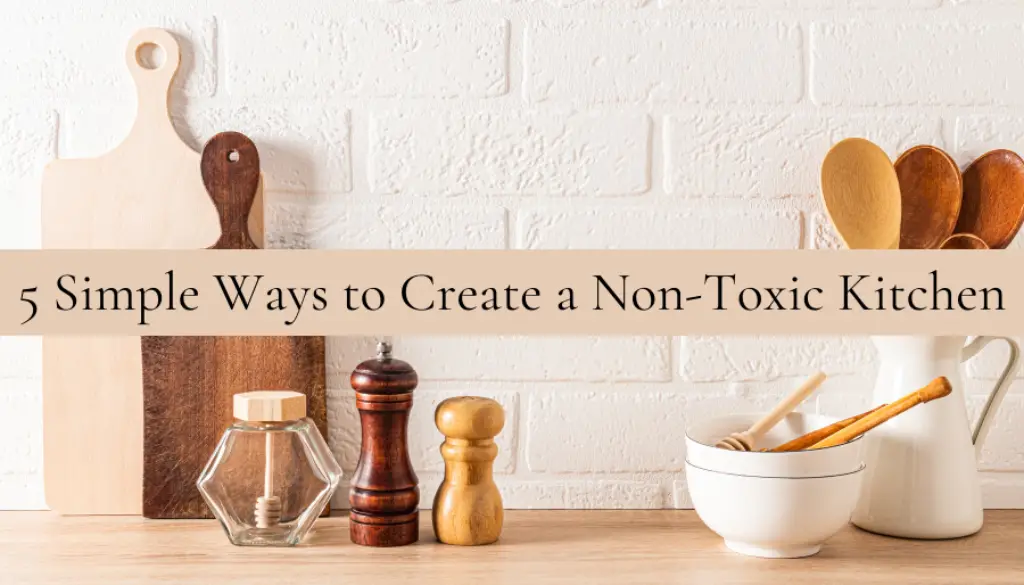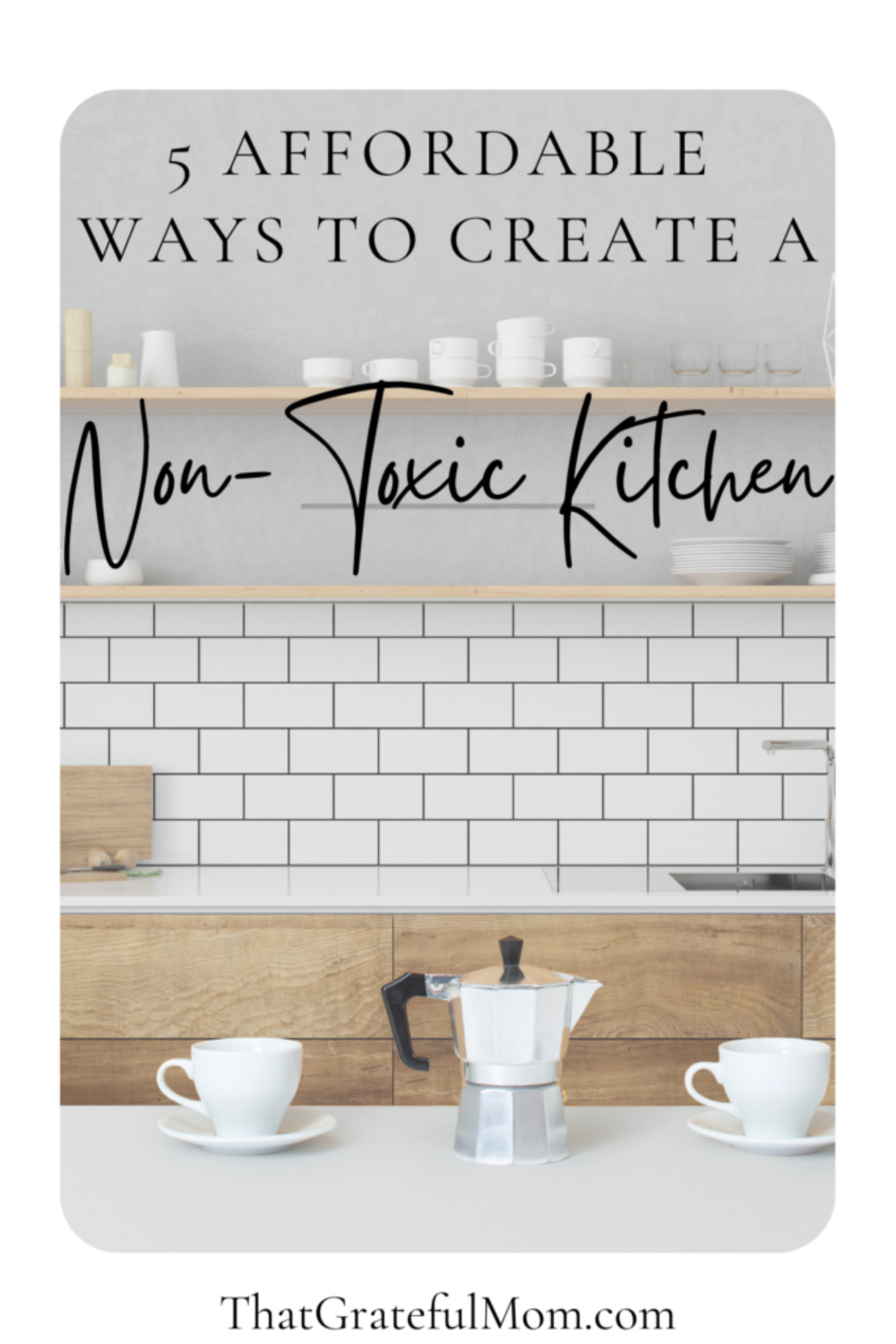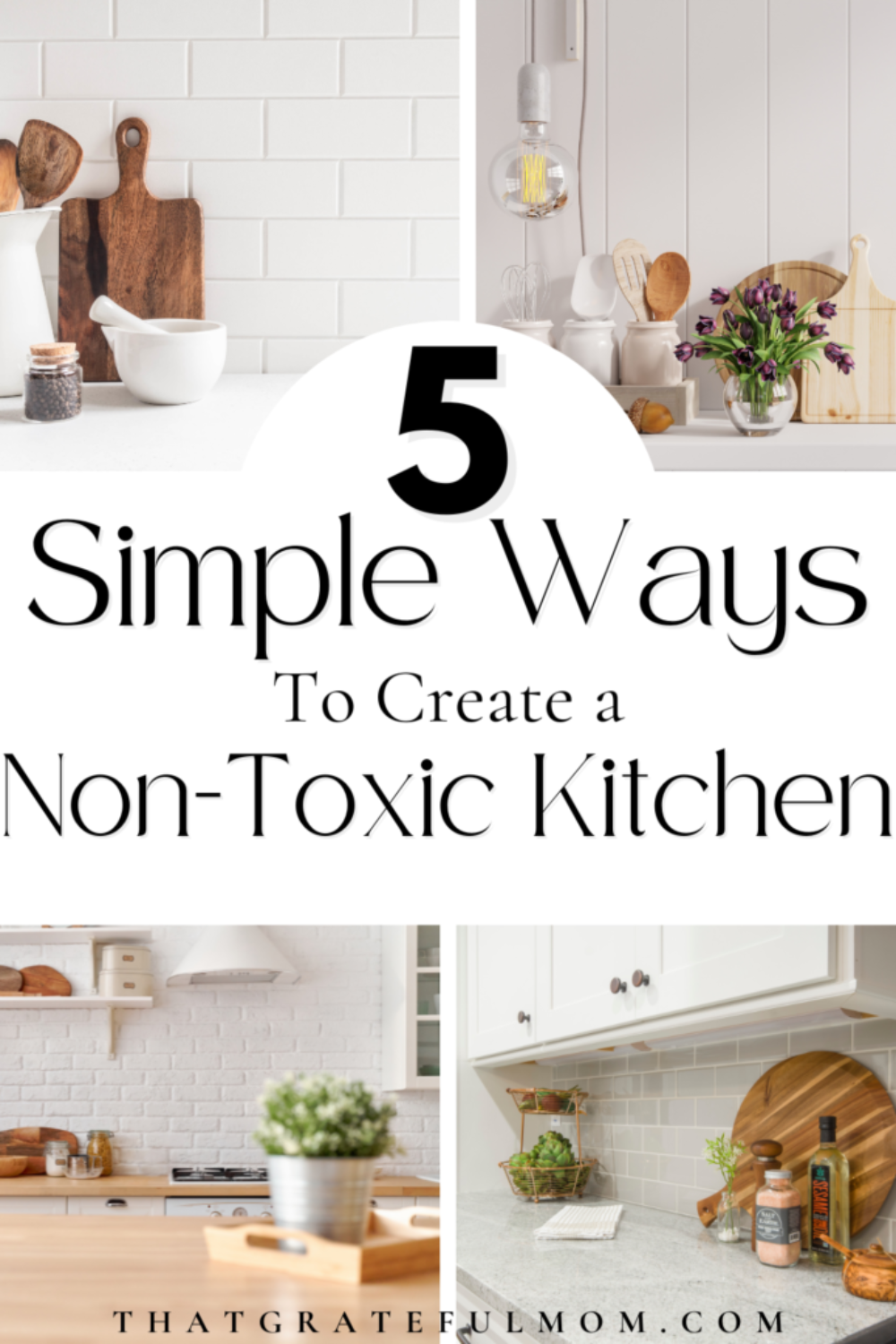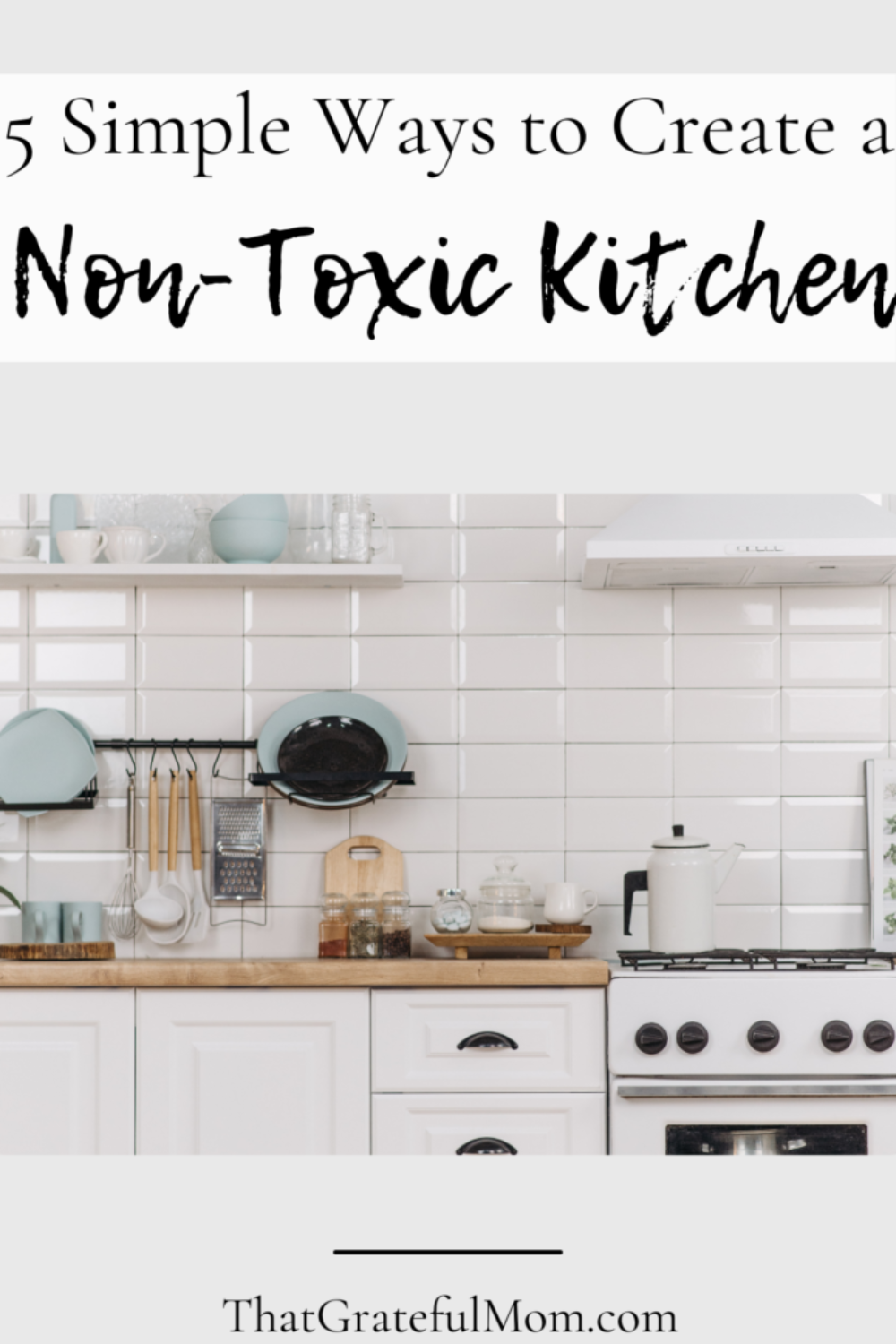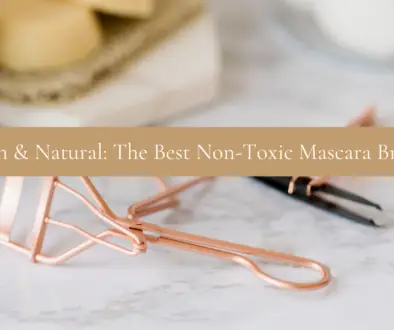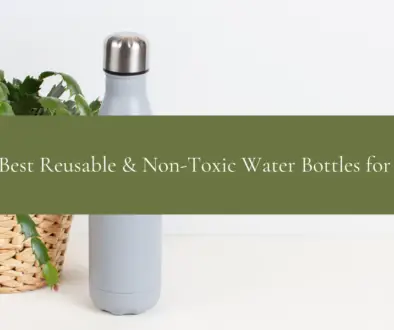Simple Ways to Create a Non-Toxic Kitchen in 2024
Removing harmful products from your home can be intimidating when you’re just starting. If you’re working room by room to clean up your home, these simple ways to create a non-toxic kitchen will help make an incredible impact on your family’s health. The kitchen is an excellent place to start as you work to make changes in your home. We spend so much time there cooking and nourishing our families that it only makes sense to start there.
What are some simple ways to create a non-toxic kitchen?
Cleaning up your kitchen and creating a non-toxic space is an excellent goal to have, but it’s important to understand why. Whether to improve allergies, create a more relaxing atmosphere, or embrace safer habits, it’s an excellent goal. For us, it started when our son was diagnosed with leukemia. I was never truly concerned about toxins in our home or cleaning up the products we use until that day in 2018 when our lives were changed in an instant.
My only experience with non-toxic or holistic living up to that point was what I had heard in passing, but I didn’t understand why it mattered. It took his diagnosis to finally see clearly how toxic our world is and start researching alternatives.
It felt incredibly overwhelming, but I kept my head down, started researching safer alternatives, and implemented changes in our home. I want our family to be as healthy as possible, so making these changes, even when they seem overwhelming, has been worth it.
If you’re just starting your journey and implementing changes in your home, understanding why eliminating toxins is important as much as possible will help you stay focused on your goal.
Why is it important to reduce our exposure to toxins in our homes?
If you don’t already know, chemicals used in products around our home, like non-stick pans, cleaning supplies, and personal care products, are linked to dozens of health issues like respiratory diseases, kidney disease, cancer, and more.
While we have no proof that our son’s diagnosis was caused by anything in our diet or home, part of me wonders what caused his cancer with no prior history of the disease in our family. I won’t live my life in fear of what-ifs, but now that I know there are better ways, I won’t return to how we used to live. This has become our lifestyle now, and we’ll continue to live this way.
How do I implement swaps and create a non-toxic kitchen?
The process will look different for everyone, and it’s important to create a timeline for implementing changes that work best for you and your family. Choose the swap that is easiest for you, and work from there! It’s okay whether it takes a few weeks, months, or even a year. The important thing is getting started. You’ve got this! Non-toxic kitchen products will reduce exposure to harmful chemicals and potential health risks.
Tip 1: Replace toxic cookware with non-toxic alternatives
Teflon coatings contain toxic chemicals that are released when you cook with them. No matter how healthy your food choices are, there’s no avoiding the release of harsh chemicals that happen when you cook with non-stick cookware.
Instead, opt for products like stainless steel pots and pans or cast iron. While there is a bit of a learning curve, you can make stainless steel cookware nonstick if you prep them properly before cooking. This article will help you learn how! Safe cookware is a crucial component when making changes in your kitchen, so make them a priority!
For food storage, swap plastic food containers like Tupperware for glass storage. We love the set we bought a few years back. They’ve held up well and never chipped when using them. Yes, plastic may be more convenient for traveling, but once you get used to glass, you’ll learn they’re a better option! Plus, plastic containers release toxic chemicals when heated. It doesn’t take high temperatures to release these chemicals, either. It’s best to avoid them altogether.
Toss the plastic kitchen utensils for silicone, wood, or stainless steel alternatives. They last forever if you wash them by hand, and you’ll never worry about them melting and releasing gross toxins, making them an excellent choice.
If you like lining your baking sheets with aluminum to reduce mess, I get it, but place a layer of unbleached parchment paper on top or invest in reusable food-grade silicone baking sheets instead! Aluminum is hard on our bodies, and we don’t need any extra exposure to heavy metals. In addition to aluminum, ditch the plastic wrap. It is filled with toxic substances.
Instead of plastic cutting boards, invest in safer substances like an organic bamboo cutting board. They last forever with no negative health effects.
Instead of plastic storage bags, try bee’s wrap. They’re reusable and lost for a long time!
Tip 2: Swap out conventional cleaning products for non-toxic cleaning products
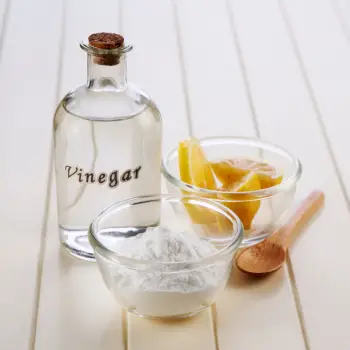
I recently shared my favorite non-toxic cleaning recipes as well as my 4-ingredient laundry detergent recipe. I’ve used these recipes for years and love them. In addition to cutting out unnecessary chemicals in our home, we’ve saved money as well! Natural cleaning products like baking soda, vinegar, and castile soap are much more affordable than conventional products riddled with toxic ingredients. I now make my own all-purpose cleaner, window cleaner, and stain remover! Non-toxic living does not have to be expensive if you know how to research affordable alternatives.
Tip 3: Swap out your baking staples for cleaner options
If you cook or bake for your family, paying a little more for cleaner options is worth it. Items like flour, sugar and salt, oils, and any other products you use often should be of the highest standard. I know for many families, finances are tight, and organic food may feel unattainable, but if you can swing it, do it! It’s worth the extra cost to reduce your exposure to unnecessary toxins.
Healthier oils to consider and their smoke point:
- Olive Oil- up to 350 F
- Butter or coconut oil- up to 400 F
- Ghee- Up to 450 F
- Avocado Oil- Up to 500 F
As you can see, these oils have varying smoke points. for high heat, avocado oil is the best option.
Toxic oils to avoid cooking with or consuming in purchased goods:
Canola, Sunflower, Soybean, Vegetable, Cottonseed, Rapeseed, Peanut, and Grapeseed.
To help cut back on costs, consider shopping in bulk for oils and other baking products! Consider a membership to Costco for things like meat, organic produce, baking supplies, and non-toxic cleaning supplies.
Another great option is Azure Standard. Their selection of organic products is excellent, and the ordering process is simple. To find a pickup location near you, go to their site choose your location, and fill your shopping cart! You can edit your order until the cutoff time and then go pick up your order a few days later. You can also earn money towards future purchases every time you order. We love how much money we save on items we use often. Plus, it’s an opportunity to meet like-minded families in your area.
Tip 4: Read your labels
I cannot stress the importance of this tip enough! You need to get really comfortable with reading labels and identifying harmful additives. Unfortunately, they’re everything, and the US has little regulation. It’s up to us as consumers to understand what is hidden in the wording of ingredient labels. If a label has more than a few items listed, especially if any of them is difficult to pronounce, chances are you should put it back on the shelf.
Don’t be fooled by phrases like ‘all natural,’ ‘clean,’ or ‘healthy.’ Just because something claims these phrases does not mean it’s good for you.
It’s frustrating, but the more informed you become, the more you’ll understand what ingredients to avoid and why it’s so important.
Tip 5: Check your water
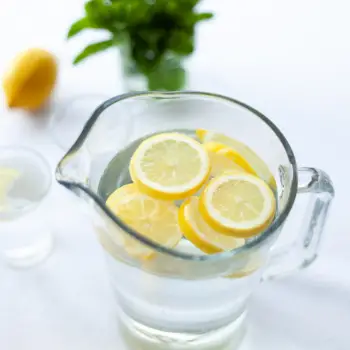
Over half of the water supply in the US is contaminated by harmful chemicals linked to cancer and other health issues. It’s more important now than ever before to filter your water supply had help protect your family from consuming these toxic products in your water.
If you’re curious how your water rates, the EWG Tap Water Database will show you the current rating of your water supply.
Unfortunately, Berkey water filters are currently unavailable, but there are still excellent options for the whole home and countertop water filter systems.
A reverse osmosis system will be the most effective, and carbon filters are the most affordable. Whatever fits your budget, make it happen when you can.
Let’s review
How can I implement these simple ways to create a non-toxic kitchen?
- Replace kitchen supplies with non-toxic alternatives, like stainless steel utensils and glass storage containers
- Incorporate safer cleaning supplies like vinegar, baking soda, and castile soap
- Swap out high-use foods for high quality organic versions when possible
- Read your labels!
- Check your water supply and invest in a filter when possible
Final words of encouragement
So, there you have it! I promise it’s not as overwhelming as you may think. It’s just super important to get started! If you’ve started the process of implementing swaps for a non-toxic kitchen, what have you learned so far?
We are nowhere near having a non-toxic home. I don’t even feel like that’s a thing. Toxins are everywhere around us, and while it’s great to work hard and remove as many as possible, it’s equally important not to live a life of fear. The easiest way to do this is to set goals and focus on your own home. Comparing yourself to others is too stressful.
These changes will become super simple over time, I promise. There’s an adjustment period, but it’s hard not to make changes once you know better. Take baby steps, and celebrate the changes you’ve made. I hope you feel encouraged and motivated to begin your journey of eliminating toxins in your home. If you have any questions or comments, please feel free to reach out!
This site may contain links to affiliate websites including Amazon. I may receive an affiliate commission for any purchases made by you through Amazon or other potential affiliates and no additional cost to you. Thank you for your support.

